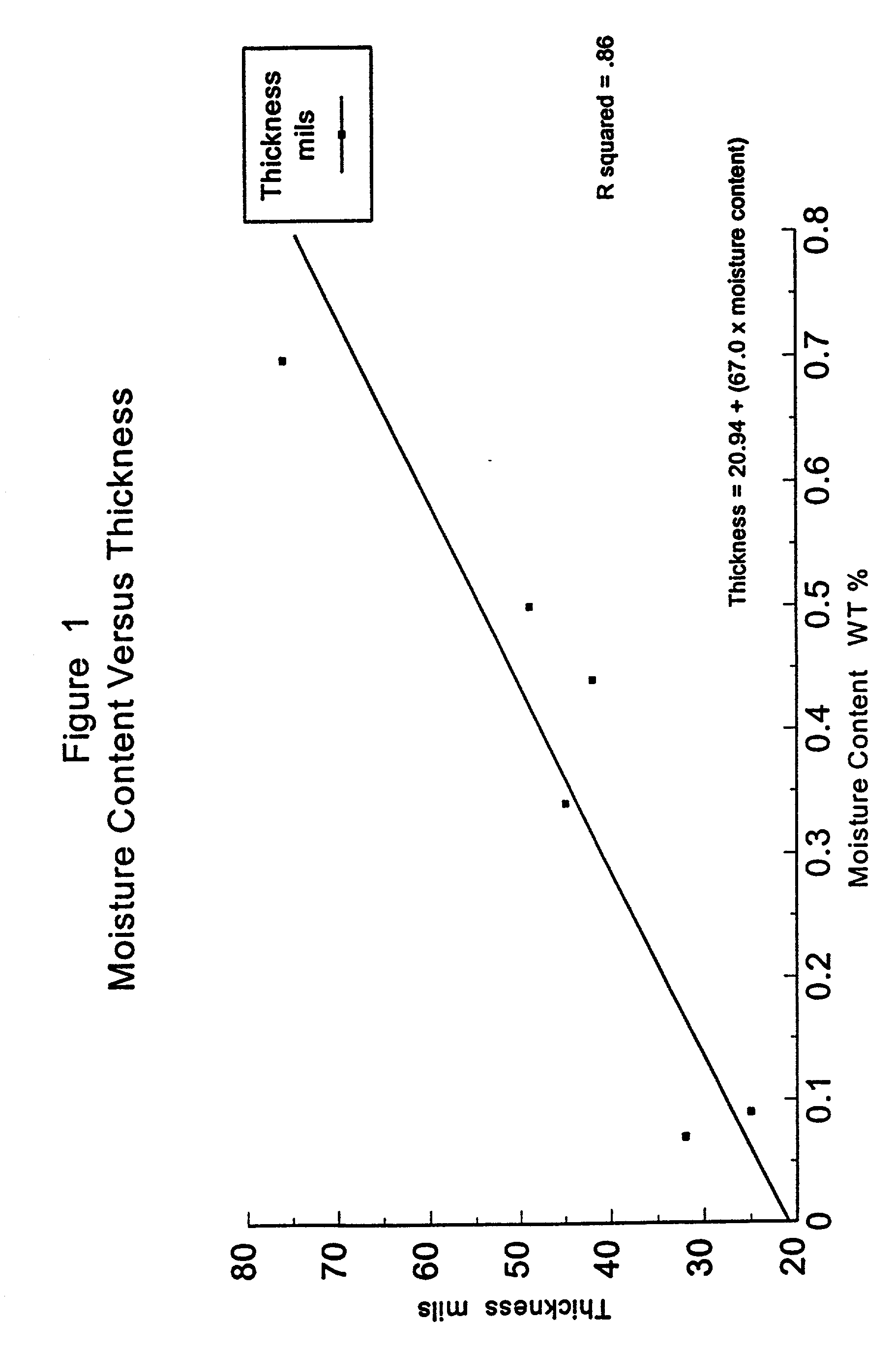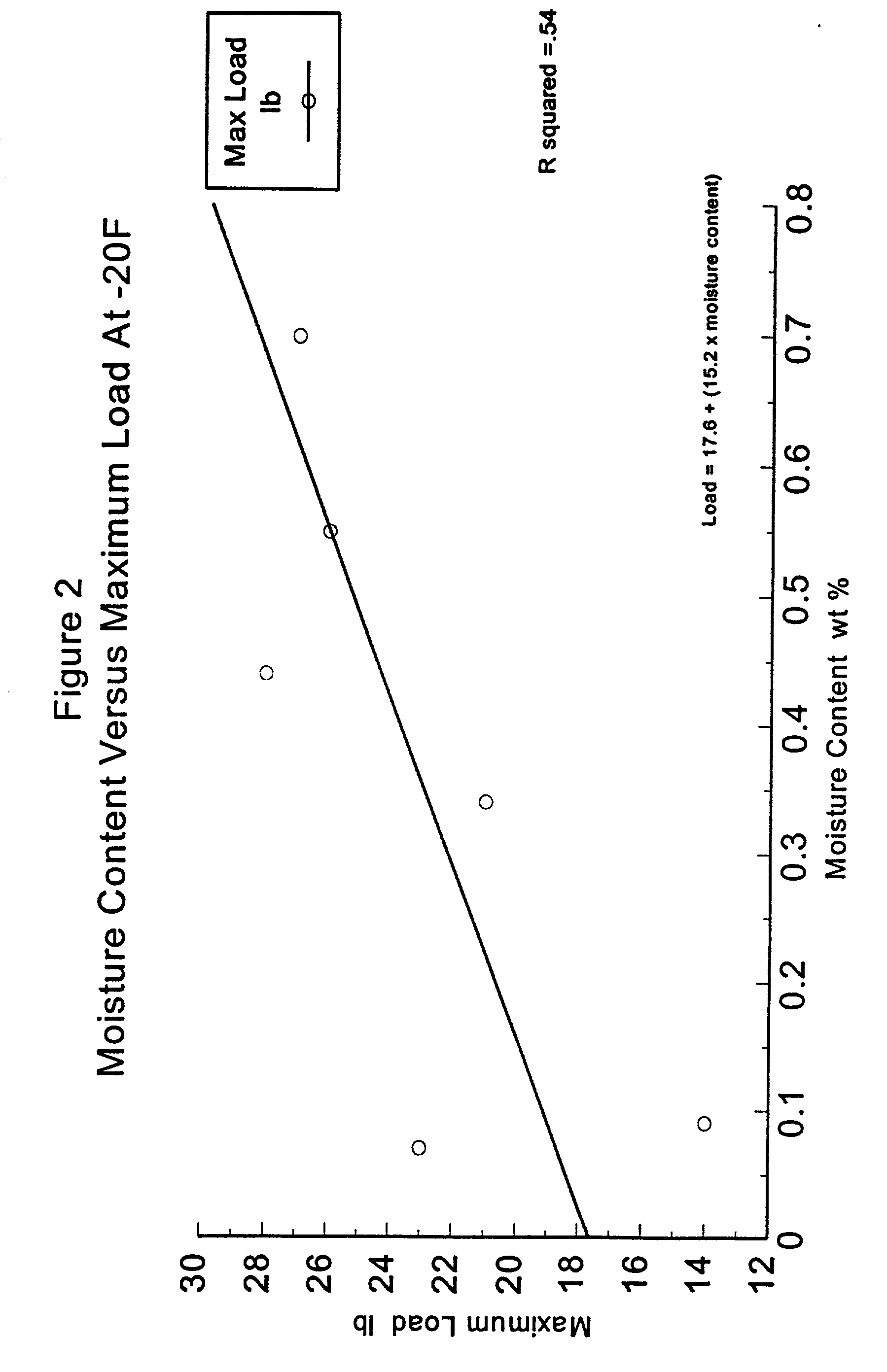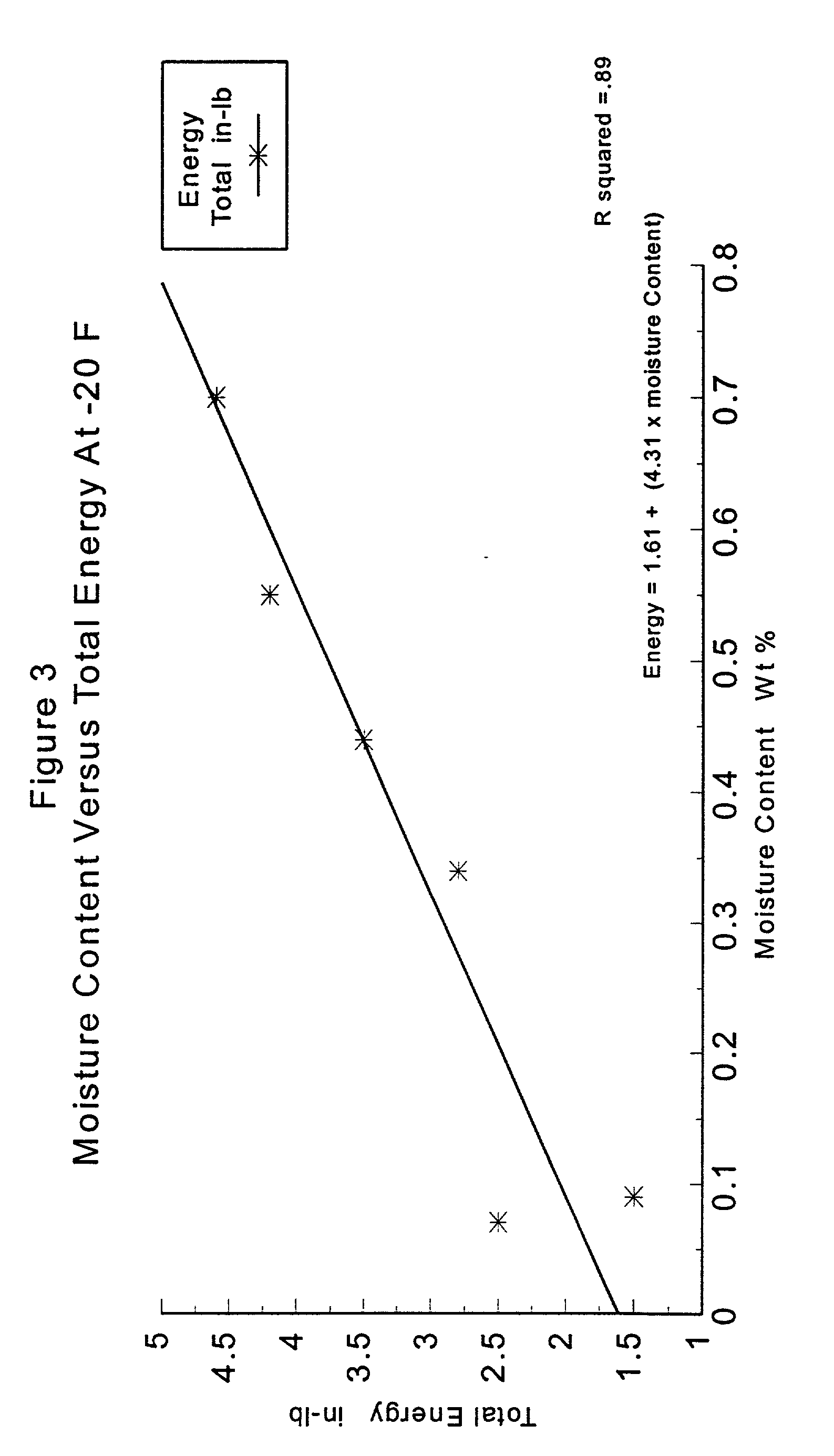Method for conditioning polyester and controlling expansion of polyester during thermoforming
- Summary
- Abstract
- Description
- Claims
- Application Information
AI Technical Summary
Benefits of technology
Problems solved by technology
Method used
Image
Examples
Embodiment Construction
[0021] As stated above, the present invention provides a method for conditioning a cellular thermoplastic resin sheet comprising exposing a cellular thermoplastic resin to a controlled humidity environment to obtain a conditioned cellular thermoplastic resin. In one embodiment, the cellular thermoplastic resin is a polyester resin. In a more specific embodiment, the cellular thermoplastic resin is selected from the group consisting of polyethylene terephthalate (PET), polyethylene naphthalate (PEN), polyethylene isophthalate (PEI), poly(butylene terephthalate) (PBT), poly(trimethylene terephthalate) (PTT) or mixtures or copolymers thereof.
[0022] In general, the method of conditioning includes subjecting a polyester resin or foam sheet to controlled humidity environment for a predetermined period of time or until the moisture content of the polyester foam or resin reaches a predetermined level, such as equilibration. Equilibration is reached when a sample has absorbed about the maxim...
PUM
| Property | Measurement | Unit |
|---|---|---|
| Fraction | aaaaa | aaaaa |
| Fraction | aaaaa | aaaaa |
| Percent by mass | aaaaa | aaaaa |
Abstract
Description
Claims
Application Information
 Login to View More
Login to View More - R&D Engineer
- R&D Manager
- IP Professional
- Industry Leading Data Capabilities
- Powerful AI technology
- Patent DNA Extraction
Browse by: Latest US Patents, China's latest patents, Technical Efficacy Thesaurus, Application Domain, Technology Topic, Popular Technical Reports.
© 2024 PatSnap. All rights reserved.Legal|Privacy policy|Modern Slavery Act Transparency Statement|Sitemap|About US| Contact US: help@patsnap.com










